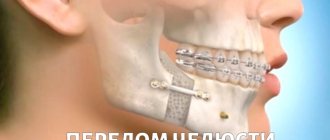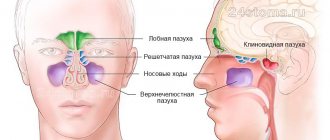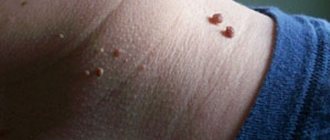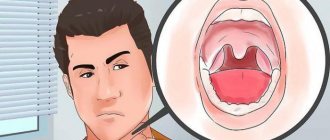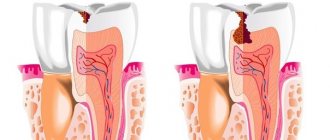Sinus lift surgery is a type of bone grafting. It is performed when the thickness of the bone tissue in the area of the alveolar processes of the upper jaw is insufficient for implantation and involves the replanting of a special material that ensures bone growth in order to raise the lower border of the maxillary sinus. Such operations have been carried out for more than 30 years and the technology for their implementation is constantly being improved. Most often, complications after a sinus lift can be caused by the patient’s failure to comply with postoperative requirements and restrictions.
If before the operation all necessary diagnostics were fully carried out, unfavorable factors were eliminated, and the operation itself was performed carefully and skillfully, and if after the operation the patient carefully followed all the recommendations, then recovery after the operation is successful and no complications arise.
Rehabilitation after surgery
Many are afraid of this operation due to fear of pain, or fear of damage to the maxillary sinuses, but the main thing here is to choose a good doctor. This must be an experienced and qualified specialist in maxillofacial surgery. In this case, the likelihood of any complications is minimized.
The likelihood of an unfavorable outcome of the operation is influenced by:
- elderly age,
- smoking,
- low immunity,
- pathologies that suppress the ability of tissues to regenerate,
- caries and inflammatory diseases in the oral cavity,
- pathologies associated with blood clotting disorders.
These risks can be eliminated (or minimized) by high-quality and complete diagnostics and the development of a surgical plan in strict accordance with the individual characteristics and condition of the patient. Absolute contraindications for sinus lifting are inflammatory diseases of the nasopharynx and paranasal sinuses (sinusitis, sinusitis, chronic rhinitis), the occurrence of tumors on the mucous membrane (polyps), and the presence of partitions in the sinuses.
Full recovery after a sinus lift takes on average 4 to 6 months. After this period, implantation can be done, but the most critical period is 8-10 days from the date of surgery. During this time, it is necessary to extremely limit physical activity, treat sutures, take only liquid or semi-liquid and soft food that does not require intensive chewing, as well as medications according to the regimen prescribed by the doctor.
Unpleasant sensations (pain, swelling, a feeling of heaviness or discomfort) occur immediately as the anesthesia wears off, and can continue, gradually subsiding, for up to a month. Most often, the swelling subsides during the first two weeks, the sutures are removed no later than after 14 days, and the pain goes away during the first week.
How to treat odontogenic sinusitis
If chronic odontogenic maxillary sinusitis is diagnosed, the doctor decides how odontogenic sinusitis will be treated, based on the patient’s condition.
In any case, antibiotics are necessarily prescribed, and their selection occurs individually, based on many factors. Caries and any other dental diseases are urgently eliminated. In most cases, the tooth has to be removed.
If the cause of dental sinusitis is any foreign body that is in the maxillary sinus, it must be surgically removed. The operation is performed under local anesthesia. Through the gum, the surgeon approaches the area that has been affected by the disease. This allows you to prevent the formation of surgical marks on the patient’s face.
If the case turns out to be severe, then to eliminate the disease it is necessary not only to remove the foreign body, but also to perform a sinusotomy. The essence of the operation is that its contents are sucked out of the sinus, the affected areas of the mucous membrane are eliminated, if there was a fistula, it is sutured, and its course is closed with a flap taken from the inside of the cheek. All this is performed using endoscopic equipment, which is introduced through the nasal cavity. It doesn’t matter what the patient’s treatment was, in any case, after it the patient is prescribed:
- Antibiotic treatment of sinusitis and teeth.
- Rinsing the nose with special solutions.
- Use of drugs with vasoconstrictor effects.
- In order to soften dry crusts, sea buckthorn oil is used.
In cases where sinusitis occurs during pregnancy, treatment is temporarily delayed until after labor has passed. Before them, physiotherapy, UHF and local antibiotics are prescribed.
In some cases, for pregnant women with illness, a puncture is used, which causes relief for some time.
Limitations after sinus lift
The regime of restrictions after surgery is aimed at eliminating the threat of complications and at rapid and effective recovery. The severity and duration of restrictions depends on the complexity of the operation and individual characteristics.
Depending on the type of surgery, there are open and closed sinus lifts. Open (if the bone thickness is less than 7 mm) is more invasive and traumatic, but despite this, the rehabilitation process after a closed sinus lift can be slower and more difficult than with open surgery. It all depends on the specific situation.
The most common postoperative restrictions include abstinence from vigorous physical activity (intense work and sports). You should also postpone air travel, visits to the bathhouse, solarium and other similar events. Severe changes in pressure and temperature can cause bleeding, accumulation of mucus in the maxillary sinuses and other negative consequences.
It is also common to also limit movement of the face, especially the nose and mouth. That is, do not blow your nose, do not sneeze, do not suck in anything forcefully (for example, do not drink a cocktail or juice through a straw), do not puff out your cheeks, do not actively rinse your mouth, etc. Due to sudden movements of the muscles of the mouth or nasopharynx, as well as pressure changes in the oral and nasal cavities, the sutures may come apart and the implanted osteogenic material may become displaced, which is fraught with serious complications.
Folk remedies for the treatment of odontogenic sinusitis
Treatment with folk remedies is extremely dangerous; you can pay for it with your health, and sometimes even with your life. Often the disease develops and becomes purulent, which can cause severe complications, such as brain damage.
Skillfully assessing the patient’s condition, as well as the advanced state of the disease, the doctor prescribes the rehabilitation of odontogenic sinusitis using one of the methods. After a successful operation, doctors recommend the following:
- Rinsing the nasal cavity with medicinal herbs and infusions.
- Inhalation.
- Propolis infusion.
In general, it is impossible to cure the disease with home remedies.
What complications are there?
Among all the numerous possible options for an unfavorable outcome of the operation, we can distinguish specific complications (for example, perforation of the maxillary sinus) - characteristic specifically for sinus lift, and nonspecific (for example, bleeding) - those that sometimes occur after any surgical intervention.
It should be noted that symptoms such as pain, swelling and slight bleeding are not complications after sinus lift, but are caused by the body’s natural reaction to surgical intervention. They are inevitably present in the first few days after surgery and gradually subside.
If symptoms such as
- bleeding,
- incessant pain
- heat,
- nasal congestion and difficulty breathing,
this may indicate the onset of a complication and requires immediate consultation with a doctor.
Edema
Swelling is a common consequence of incisions and other tissue damage during surgery. Normally, swelling occurs immediately after surgery and subsides within 3 days. If swelling does not disappear after sinus lift, this is an alarming symptom in which you should definitely consult a doctor.
Pain
The question of how long it hurts after a sinus lift bothers many. In general, it is normal to experience pain after surgery as the anesthesia wears off. The reason why it hurts after sinus lift surgery is the physiological response of the body to microdamage to tissue and is a necessary element of the recovery process.
The pain is usually minor, but if it bothers you, you can take a pain reliever prescribed by your doctor. Normally, pain after a sinus lift gradually weakens and goes away within a week. The perception of pain is different for everyone, it is very individual, but in any case, a normally healing wound hurts less and less. If the pain does not subside, or even worsens, this means that you need to call a doctor.
Bleeding
On the one hand, bleeding is a natural and inevitable consequence of traumatic damage to small vessels during surgery. On the other hand, any bleeding is a potentially life-threatening situation. Of course, in the operating room there are all the means and capabilities to instantly stop bleeding, so the operation itself is often almost bloodless, especially if it is an operation such as a closed sinus lift, which is often combined with implantation.
There should be no bleeding from the nose after a sinus lift, but after the operation (mainly during the first two days), a small amount of blood or ichor may be released from the operation area in the mouth or from the nose. Therefore, to prevent such conditions or in case of minor bleeding immediately after the end of the operation, it is recommended to apply a cold compress to the cheek on the side where the operation was performed. And also bite a sterile swab or napkin at the operation site. The cold compress should not be kept for longer than 15-20 minutes and you should also wait 15-30 minutes before applying the compress again. If the bleeding does not stop, you should consult a doctor.
Infection
Infection can get into a surgical wound in several ways:
- violation of aseptic and antiseptic requirements during surgery (for example, a doctor may accidentally touch an area of mucous membrane with an instrument and not notice it, or a drop of saliva may accidentally enter the wound),
- refusal to take medications prescribed by a doctor during the postoperative period (including unintentional, for example, skipping the time of taking an antibacterial drug),
- the presence of sluggish untreated infections in the oral cavity or nasopharynx,
- entry of infection or bone material into the cavity of the maxillary sinus due to perforation of the mucosa,
- violation of oral hygiene during the rehabilitation period,
- wound injury and suture dehiscence,
- a serious decrease in immunity due to hypothermia, active sports, hard work or emotional stress.
The action of pathogenic microorganisms that penetrate the wound causes the development of inflammation. A sign of this is increased pain, increased swelling, increased redness of the tissue at the operation site, and the appearance of purulent discharge. Often there is also an increase in temperature (up to 38 degrees and above). In the future, the development of infection can lead to rejection of the implanted materials, serious illnesses (sinusitis) and other unpleasant consequences, so you cannot delay visiting a doctor if such symptoms appear.
Sinusitis
Inflammation of the paranasal sinuses (including the maxillary sinuses - sinusitis) occurs due to the penetration of a bacterial infection into the mucous membranes of the sinuses and can be either a consequence of infection of the damaged mucosa or a complication after a runny nose.
After a sinus lift, it will be better to make every effort not to catch a cold or illness, or to catch a respiratory infection, since this will not only create additional problems for the healing of sutures and tissue damage at the operation site (swelling, deterioration of ventilation of the nasal passages and sinuses, accumulation of mucus, coughing and sneezing, etc.), but will also weaken the immune system, slow down the engraftment of osteogenic material and recovery after surgery.
Sinusitis
Sinusitis is a type of sinusitis, inflammation of the maxillary sinuses, precisely those located at the site of the operation. As a complication after sinus lift, this disease can only occur if during the operation the sinus mucosa, the Schneiderian membrane, was damaged (for example, torn or punctured). Damage to it can lead to infection and the development of inflammation. Sinusitis not only can negate the whole point of the operation, but is also a dangerous disease in itself due to the proximity of the maxillary sinuses to the brain, and therefore requires serious and immediate treatment.
If the patient has sinusitis (which developed before surgery), it is impossible to perform a sinus lift. First, you need to undergo a course of antibacterial therapy, and only after that plan a sinus lift surgery.
Headache
This symptom may appear as a result of nerve irritation due to traumatic damage to the jaw tissue, or due to the toxic effects of infectious agents. It may occur due to developing sinusitis or other inflammatory reactions.
Headache can also occur due to emotional stress, when the patient is very afraid of the operation or fears complications. Pain can also be triggered by a surge in blood pressure, which often occurs after surgery in people prone to hypertension. Normally, the pain should not be severe, should be relieved with painkillers and non-steroidal anti-inflammatory drugs, which will be prescribed by the doctor in the postoperative period, and should resolve within 7 days after the operation. If the pain does not go away, and even more so if it intensifies, be sure to consult a doctor, as this may be a sign of wound infection, inflammatory reactions, and even rejection of bone material and implant.
Seam divergence
After the operation, the dissected soft tissues are sutured, i.e. stitches are placed so that the edges of the wound do not diverge and can heal normally, ensuring the integrity of the mucous membrane and other soft tissues and the normal functionality of the oral cavity.
The applied sutures are removed no later than 14 days after the operation, when the tissues have completely grown together. But sometimes (as after other operations) the stitches can come apart. In modern surgery, very strong and reliable materials are used, so sutures can come apart only for 2 reasons:
- violation of the rules of postoperative oral care,
- manufacturing defect of the thread.
Moreover, the second reason is extremely rare. Almost always, suture dehiscence occurs due to improper behavior of the patient - uncontrolled touching and rubbing the operation site with the tongue, traumatizing the wound with a hard toothbrush, eating solid foods (apples, nuts, etc.), excessive rinsing of the mouth, actions with great muscle tension (puffing). balloons, drinking drinks through a straw, loud singing, whistling, screaming, etc.
The result will be opening of the wound, bleeding and infection with the development of inflammation, which can lead to rejection of the implant or osteoplastic material. Therefore, at the first signs of suture dehiscence (pain, bleeding, increased swelling, sensation of moving protruding ends of threads or flaps of tissue in the wound area), you should immediately contact the clinic for medical advice and help.
Temperature
Low-grade fever (up to 37-37.5 degrees) in the first hours of the postoperative period can be considered normal, since this is often a physiological reaction of the body to surgery. But a prolonged and unexpected increase in temperature (especially when everything went well in the first day or two after sinus lift) is an alarming symptom and may be a sign of wound infection and incipient inflammation. In this case, you should immediately consult a doctor to inspect the oral cavity and the site of the operation. Timely measures taken can suppress the development of infection and ensure a successful outcome of the operation. And delaying and delaying will lead to complications and rejection of the implanted materials, which will negate the entire operation, and in some cases may even make it impossible to repeat the bone augmentation procedure and implantation.
Numbness
Loss of sensation after bone grafting in the upper jaw is much less common than during operations on the lower jaw. During the first 24 hours after the end of the operation, the anesthesia gradually wears off (usually within the first 12 hours, in rare cases a little longer) and sensitivity, as a rule, returns completely.
However, occasionally, loss of sensation may occur due to nerve damage during surgery, compression, or damage due to displacement of the bone material or implant. Correctly and fully carried out diagnostics (tomography) before the operation allows you to see the location (including atypical) of nerve branches and nodes, and therefore practically eliminates their accidental damage during sinus lifting.
In addition, the sensitivity of the upper jaw area is provided by several independent nerve branches and damage to one of them will not cause a complete loss of sensitivity.
However, in some cases, compression of the nerves is possible due to displacement of the implant (if it was installed simultaneously with a closed sinus lift), or pathological healing and proliferation of bone tissue. If numbness (complete or partial) appears a few days or even weeks after the procedure, you will have to contact the clinic to conduct a study and decide on further actions.
Fistula
A fistula is a pathological opening or passage that forms in the upper jaw between the oral cavity and the cavity of the maxillary sinus. This formation occurs as a result of an infection that destroys soft tissue and bone in a certain area. The reason in most cases is the penetration of pathogenic microorganisms into the postoperative wound due to violation of the dentist’s instructions - insufficient oral hygiene, chewing food on the side where the operation was performed, refusal (or negligence in carrying out) antibacterial therapy and antiseptic procedures.
Signs of the appearance of a fistula are an increase in temperature (up to 37-37.5 degrees), pain in the operation area when moving the head, a feeling of air moving in the mouth when breathing, the appearance of a hole in the upper jaw, and the discharge of pus from it.
The fistula will not disappear on its own, because... there is a hole in the bone in this place, so you will have to see a doctor.
Yield of bone material
Such a complication is possible in the first 14 days after surgery, until complete restoration and healing of all tissues has occurred. In cases where bone chips appear in the mouth or nose on the side of the operation, it is necessary to pay attention to the circumstances surrounding this (for example, playing sports) and the presence of other symptoms of complications (bleeding, suture dehiscence, etc.).
The release of bone material can occur due to its mobility and the appearance of holes in the materials covering it - during perforation of the mucous membrane of the maxillary sinus, or due to suture divergence.
As a result, osteogenic material may be washed out, which will neutralize the results of the operation and make it pointless, so it is necessary to report the problem to the doctor.
Recommendations after sinus lift
In order to minimize the risk of complications after sinus lift surgery, it is important to strictly follow the doctor’s recommendations. Usually this is a list of restrictions (exclusion of intense physical activity, air travel, visiting a bathhouse, etc.), as well as oral care requirements:
- the need to treat the wound area with a cotton swab (or cotton swab) with an antiseptic solution - within 8-10 days after surgery,
- do not chew or bite with teeth located in the surgical area,
- eat only soft or semi-liquid foods, neither hot nor cold,
- brush your teeth no earlier than the 2nd day after surgery, exclusively with a brush with soft bristles, while carefully avoiding the operation area,
- do not smoke or drink alcohol, as these substances slow down recovery.
As already mentioned, you should never blow your nose or sneeze. If mucus or ichor is released from the nose, it must be removed with a napkin or cotton swab. You should not rinse your mouth after surgery: if necessary, you can put an antiseptic solution in your mouth, carefully and slowly move it to the operation area, hold for 30 seconds and carefully spit it out. It is advisable to avoid stressful situations and colds, and if alarming symptoms appear, immediately consult a doctor.
After 2 weeks, you will be able to basically return to your normal routine of life, but before that you will have to be patient for a while so as not to harm your health and not waste all your bone grafting efforts.
Symptoms of the disease: what to watch out for
Regardless of the causes of the disease, its symptoms are always the same:
- The sense of smell disappears, it can disappear completely.
- Migraines, feeling of weakness.
- Fever and chills.
- On teeth that have provoked inflammation, an aching sensation occurs; if you tap on them, a sharp, severe pain is felt.
When the disease worsens, the signs become more noticeable, and especially if it becomes purulent. When inflammation subsides, symptoms remain but become less intense, making them difficult to recognize.
If the cause of the infection is constantly located at the roots, as well as in the sinus in the teeth, then pain will be felt with sinusitis. Because of this, patients cannot eat solid food, although they feel absolutely healthy.
In addition to all this, a fistula may form. Its sign will be that liquid food consumed by a person will flow out of the nose along with pus. This only happens when you are in an upright position.


